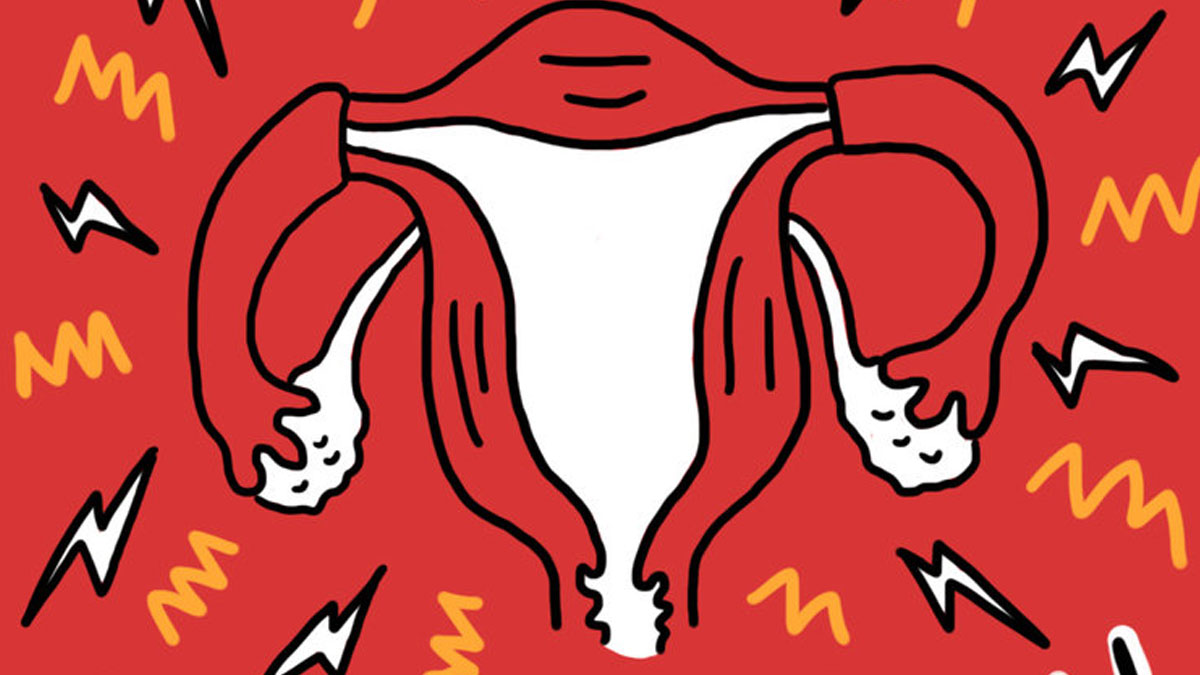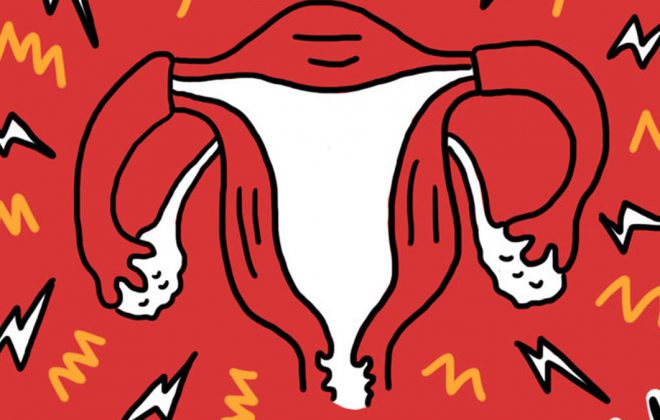My Uterus is often angry I
“Beep beep” the alarm rang at 9 ‘o’ clock in the morning, “Arrgh!” screamed Tinu in hot tears while being curled up in fetal position writhing in gnawing abdominal pains radiating to her lower back, she had been to the toilet twice as well. She has been this way four hours curling and turning before her alarm went off. She had made plans to hang out with her friends since they had the weekend free. She often forgot to keep track of her period and didn’t know it was due either yesterday or today. She didn’t know whether to cry from the pain or the fact that she might miss out on all the fun she is supposed to have today wither her friends as it was the only free Saturday they had this month to visit the mall and museum.
Tinu, raised by her busy single-dad, started her menses about 6 months ago and has been having cramps in the last 3 months but didn’t know how to relay her ordeal to her dad as they don’t often discuss such topics. She immediately called her friend, Brenda, “Hello B, It’s that time of the month and the red cape captain is at it again, she cried. I don’t know why my uterus is often angry. Can you please come over I need your help?”
Dysmenorrhea is simply painful menstruation (monthly flow of blood from the uterus). It occurs due to contraction of the uterus which is a muscle. It may occur as a sharp pain, dragging or a deep ache which waxes and wanes.
This cramps often starts at the beginning of the period and lasts about 2-4 days, maybe be associated with nausea and vomiting, feeling bloated, diarrhea or constipation, headaches. The cramp is often felt like a lower abdominal pain and sometimes back pain, radiating to thighs. It is normal to feel mild pains during your period, however, if severe to disturb your normal activities and causing you to miss school days despite the use of regular analgesics (pain reliefs) then you should see a doctor.
Dysmenorrhea can be categorized into 2:
- Primary: not due to an underlying disease.
- Secondary: in the presence of pelvic pathology such as endometriosis, ovarian cysts, congenital malformations.
What should Tinu do?
There are a number of ways to manage menstrual cramps ranging from non-pharmacological to pharmacological (use of medications) methods:
- Using heat packs (often bottles) gently placed over your lower abdomen. Do take care not to burn yourself by making it too hot.
- Exercises such as yoga have been shown to help provide relief.
- Taking a warm shower or bath.
- Use of over the counter drugs such as NSAIDs (Non-steroidal anti-inflammatory drugs) e.g. ibuprofen, diclofenac, aspirin, acetaminophen (N.B: avoid if you have a stomach ulcer and be sure not to overdose)
- Use of hormonal pills (birth control pills)- ensure doctor’s prescription. They work by thinning the lining of the uterus hence less blood supply and less cramping.
Brenda was at Tinu’s in 10 minutes with ibuprofen and prepared warm compress for her abdomen to help relieve her pain and hot chocolate drink which helped ease her to sleep. At 11 am, Tinu was wide awake and feeling much better and ready to go out. She had also learned what to do when she has the cramps.
It’s important to note also that not all girls will have menstrual cramps if you do, and it’s quite severe (worsening pain), experiencing heavier flow requiring more than 1 pad in an hour please visit the doctor.
It is also good to have a period tracker as it helps to keep track of your cycle, the flow, and when you have pain, and what helps to relieve it.
We’ll discuss more secondary dysmenorrhea in other posts.
Ciao.




